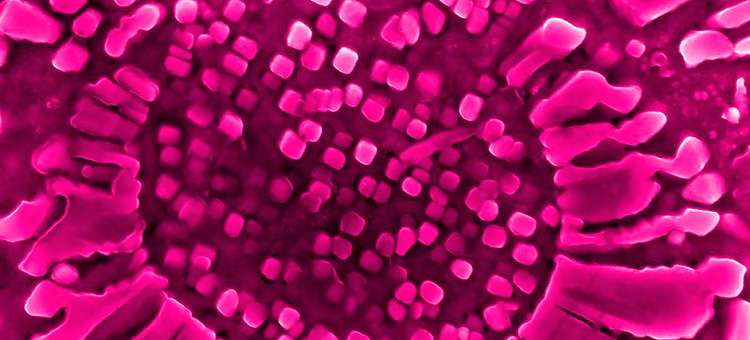New track for converting waste heat to electricity

Huge amounts of energy are lost every day in the form of waste heat. Now an interdisciplinary project at Chalmers has found that a special class of material – high-entropy alloys – can open the door to efficient heat recycling.
Boosting energy efficiency is an important element of the transition to a sustainable energy system. There are big savings to be made. For example, less than half the energy content of diesel is actually used to power a diesel truck. The rest is lost, mostly in the form of heat. Many industrial processes also deal with the problem of excessive waste heat.
That's why many research teams are working to develop thermoelectric materials – materials that can convert waste heat into energy. But it's no easy task. To efficiently convert heat to electricity, the materials need to be good at conducting electricity, but at the same time poor at conducting heat. For many materials, that's a contradiction in terms.
"One particular challenge is creating thermoelectric materials that are so stable that they work well at high temperatures," says Anders Palmqvist, professor of materials chemistry, who is conducting research on thermoelectric materials.
He first met materials scientist Sheng Guo at an interdisciplinary workshop on materials for energy applications at Chalmers. Guo works with a fairly new type of material called high-entropy alloys, at the Department of Materials and Manufacturing Technology at Chalmers. High-entropy alloys typically consist of at least five elements, usually metals, at fairly similar quantities. They are stable even at high temperatures, and the characteristics of the alloys can be manipulated by varying the components or the quantities of the components.
"It sounded as if high-entropy alloys could be a good new track to test in thermoelectric materials," Palmqvist says. "As far as I knew, no one had done it before, so we decided to initiate a project together."
They also invited theoretician Paul Erhart at the Department of Physics into the project, and with financial support from Chalmers' Materials Science Area of Advance they jointly hired a postdoc, Samrand Shafeie.
"It was an efficient model, with three research leaders who complement each other very well," Palmqvist says.
They manufactured and studied high-entropy alloys consisting of aluminium, cobalt, chromium, iron and nickel, with varying quantities of aluminium. It turned out that they were able to enhance the qualities that lead to good thermoelectric capabilities, and the scientists concluded that high-entropy alloys have the potential to develop into very good thermoelectric materials.
They published their results in the Journal of Applied Physics, and the article was the most-read in January. It was also labelled "exciting" by the editors.
The task now is to continue developing the materials and to try to understand the ideal formulation of high-entropy alloys for optimal thermoelectric properties.
"It's a slow process, because there are many variables to play around with and a whole periodic table of elements to investigate," Erhart explains. "But with good theoretical understanding, we can try to predict which elements are the most interesting."
The joint project was a positive experience for the Chalmers scientists, who are already thinking about ways to further develop their research. They've also been invited to collaborate with Uppsala University and KTH Royal Institute of Technology.
"Currently, the automotive industry is showing the greatest interest in converting waste heat to electricity," Palmqvist tells us. "But if we create a really good thermoelectric material, the potential applications would expand. For example, we could produce electricity as a by-product at industries like steel mills."
More information: Samrand Shafeie et al. High-entropy alloys as high-temperature thermoelectric materials, Journal of Applied Physics (2015). DOI: 10.1063/1.4935489
Journal information: Journal of Applied Physics
Provided by Chalmers University of Technology





















